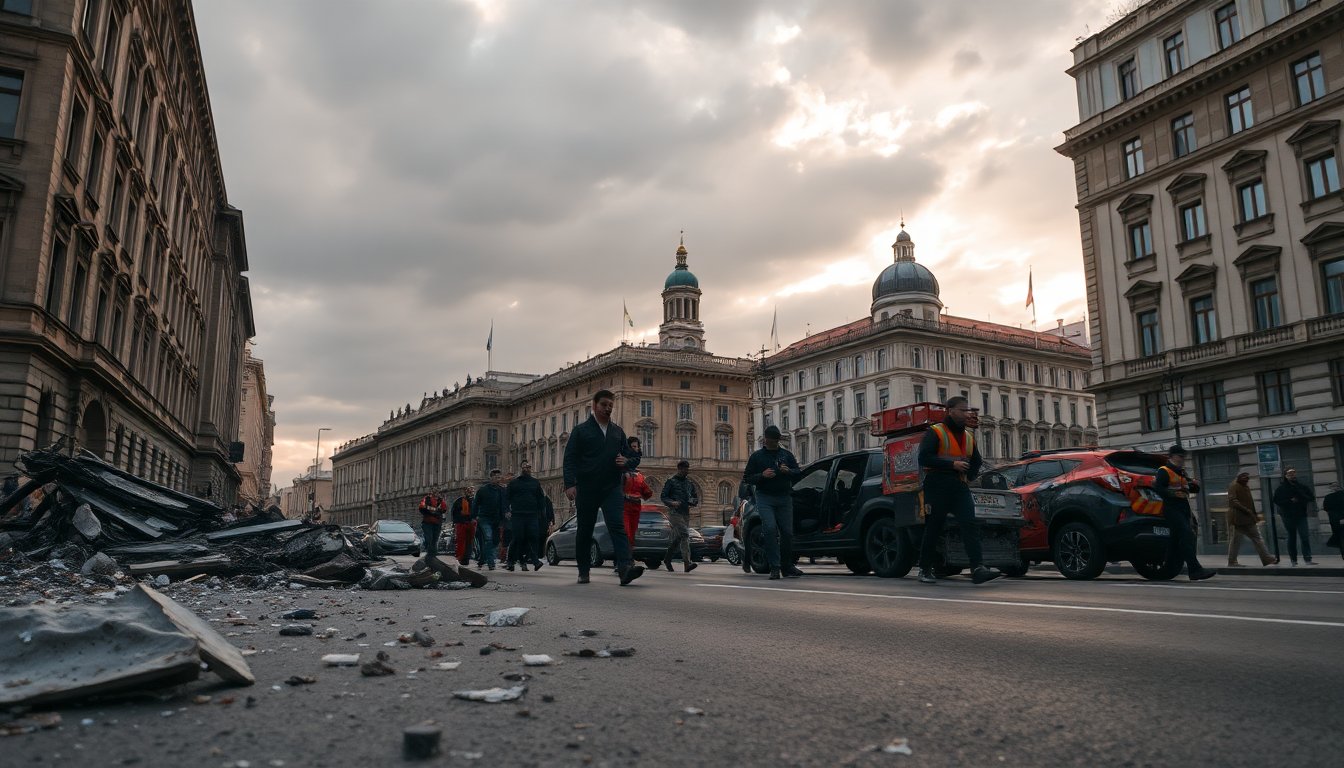Table of Contents
The conflict between Russia and Ukraine has escalated dramatically, marked by a series of drone and missile strikes on the Ukrainian capital, Kyiv. These attacks resulted in civilian casualties, including fatalities and injuries, as cities contend with the fallout from ongoing military aggression. At the same time, diplomatic efforts are in progress, with U.S. and Ukrainian representatives engaged in discussions to revise a proposed peace plan aimed at resolving the ongoing conflict.
The evidence
According to the State Emergency Service of Ukraine, the overnight strikes targeted residential areas in the Pecherskyi and Dniprovskyi districts, causing extensive property damage. The assault resulted in at least two deaths and six injuries, while emergency services rescued 18 individuals trapped in the rubble, including three children. Another attack on nearby districts injured a 14-year-old child, highlighting the indiscriminate nature of these strikes.
U.S. and Ukraine peace talks
In response to the attacks, U.S. and Ukrainian officials convened in Geneva to discuss Washington’s proposed 28-point peace plan. However, the proposal has faced skepticism from Kyiv and its European allies, who perceive it as favoring Russian interests. Ukrainian President Volodymyr Zelenskyy addressed the nation, expressing cautious optimism regarding the discussions but acknowledging the presence of sensitive issues that require resolution.
Zelenskyy noted that while the list of necessary steps to achieve peace has been refined, substantial work remains. He reaffirmed Ukraine’s commitment to pursuing a dignified peace, stating, “Ukraine will never be an obstacle to peace—this is our principle, a shared principle, and millions of Ukrainians deserve a dignified peace.”
International reactions and implications
President Donald Trump commented on the developments, suggesting that progress might be occurring in the peace negotiations. However, he cautioned against premature optimism, stating, “Don’t believe it until you see it, but something good just may be happening.” The White House acknowledged that several disagreements persist in the peace process but expressed confidence in resolving these issues promptly.
Challenges facing Ukraine
As pressure mounts on Zelenskyy to accept the U.S. proposal, public sentiment in Ukraine appears overwhelmingly against concessions to Russia. Polls indicate that a significant majority of Ukrainians reject the peace deal, fearing that any agreement may invite further aggression from Russia. This sentiment is exacerbated by internal challenges facing Zelenskyy, including a corruption scandal that has diminished his domestic support.
European allies are also grappling with the implications of the proposed peace plan. Concerns have been raised about potential territorial concessions and limitations on Ukraine’s military capabilities, which many view as compromising Ukraine’s sovereignty and security. A counter-proposal from Ukraine’s European allies seeks to halt hostilities based on current front lines and includes a NATO-style security guarantee for Kyiv.
The implications
As discussions progress, the urgency for a resolution intensifies, particularly in light of Russia’s recent military actions. German Chancellor Friedrich Merz emphasized the need for Russia to engage constructively in the peace process, reflecting sentiments from other European leaders. The situation remains precarious, with no clear path to resolution in sight.
Moreover, the dynamics of U.S. politics play a crucial role in shaping the peace negotiations. Trump’s administration has faced scrutiny from within his party regarding its approach towards Ukraine, adding another layer of complexity to the ongoing discussions. With the stakes so high, the international community is closely monitoring as both sides navigate the challenging waters of diplomacy and military strategy.


